 | ![Montez Magno[Timbaúba, 1934. Vive e trabalha em Recife]Da série Barracas do Nordeste, 1972. Óleo sobre duratex, 80×100 cm.](../../img/ilustracao/04/03/a06/a06a_modal.jpg) ![Montez Magno[Timbaúba, 1934. Vive e trabalha em Recife]Da série Barracas do Nordeste, 1972. Óleo sobre duratex, 80×100 cm.](../../img/ilustracao/04/03/a06/a06b_modal.jpg) ![Montez Magno[Timbaúba, 1934. Vive e trabalha em Recife]Da série Fachadas do Nordeste, 1996. Acrílica sobre papelão, 47×56 cm.](../../img/ilustracao/04/03/a06/a06c_modal.jpg) ![Montez Magno[Timbaúba, 1934. Vive e trabalha em Recife]Da série Fachadas do Nordeste, 1996. Acrílica sobre papelão, 47×56 cm.](../../img/ilustracao/04/03/a06/a06d_modal.jpg) ![Montez Magno[Timbaúba, 1934. Vive e trabalha em Recife]Da série Teares de Timbaúba, 1998. Lápis de cor e pastel a óleo sobre papel Fabriano, 54,5×72 cm.](../../img/ilustracao/04/03/a06/a06e_modal.jpg) ![Montez Magno[Timbaúba, 1934. Vive e trabalha em Recife]Da série Teares de Timbaúba, 1998. Lápis de cor e pastel a óleo sobre papel Fabriano, 54,5×72 cm.](../../img/ilustracao/04/03/a06/a06f_modal.jpg) |  |  |
Montez Magno
[Timbaúba, 1934. Lives and works in Recife]
With an artistic career spanning six decades, the Pernambucan artist Montez Magno possesses an extremely complex and diversified oeuvre that is unfolded in different media and researches. In the context of the exhibition Além da Vanguarda, we are particularly interested in the artist’s investigations concerning the geometry of popular art, which he began in 1972 with his studies for the first cycle of the series Barracas do Nordeste [Tents of the Northeast], from which we are presenting three pieces in the show.
It is worthwhile citing here an excerpt from one of the artist’s letters selected by Clarissa Diniz in her essay published in the monograph of the artist released in 2010, where he explains the aim of his research:
“[...] A large part of my current work is based on things from right here, in Recife, in the Northeast, but the people of Recife themselves don’t perceive this. I am carrying out a research or study of the forgotten and omitted side of Brazilian popular art: the abstractionist side. It’s incredible what the people do in terms of geometric abstraction. I am using photographic slides to document the various modalities of abstract-geometric expression: tents used for celebrations and street markets covered with patches, ice cream and popcorn wagons etc.; garage doors, and other things that appear along the way. It’s fantastic, and you will sometimes find things from op-art, concretism and constructivism, all of it made in utter ignorance and ingenuousness, but with a sharp and intuitive sense of color and construction. It is from these things that I currently extract material for my work”.
His Barracas do Nordeste, with their imprecise and vividly colored geometric shapes, oscillate between abstraction and figuration, since they retain a formal connection with their referent, sometimes even presenting indications concerning the context from which they were removed. The two other series represented in this show also resort to an approximation with the popular realm, although they seek different formal solutions. In Teares de Timbaúba [Looms of Timbaúba], the artist focuses on explorations of geometric possibilities of the line, experimenting with different traces made by pencil and oil pastel on a neutral paper background, thus producing a starker result. For its part, the series Fachadas do Nordeste [Facades of the Northeast] consists of small-format paintings made in acrylic on cardboard. In this case, taking popular architecture as a motif, color and line seem to possess equivalent weight.
